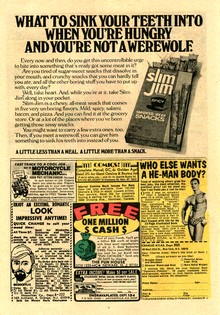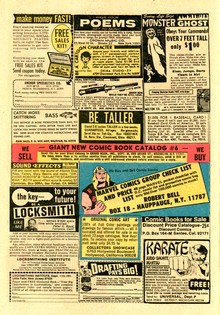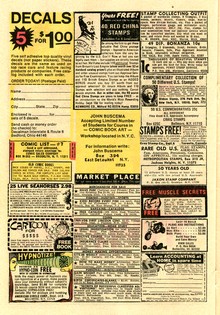 |
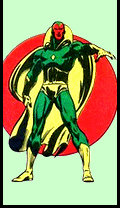 |
|
 SPOTLIGHT
ON SPOTLIGHT
ON
THE
AVENGERS, BLACK PANTHER &
CONAN
BACK
TO BACK IN A
SEPTEMBER 1975 MARVEL MULTI-MAGS
|
|
|
|
| |
AVENGERS
#139
JUNGLE
ACTION #17
CONAN
#54
|
|
 |
|
| |
|

|
|
| |
| By
the mid-1970s, Marvel had fully embraced
the marketing concept of selling multiple comic
books packaged in a sealed plastic bag to a
customer base which comic books could hardly
reach otherwise: people shopping at supermarkets
and large grocery stores. It didn't really
matter therefore that buying these three comic
books in a comicpack for 74¢ (rather than from a
newsagent for 75¢) clearly presented no real
bargain - it was the opportunity and convenience
to pick up a few comics at the same time parents
and adults did their general shopping. Neatly
packaged, it almost became an entirely different
class of commodity.
The MARVEL MULTI-MAGS we are
looking at here features three titles from the
September 1975 cover date run (meaning they were
actually on sale in June 1975): Avengers #139,
Jungle Action #17, and Conan #54.
There is no general rule
to state what shape/grade the comic books in a MARVEL MULTI-MAGS (or any other comic pack for
that matter) will be in. After all, a lot of
things can go wrong during their 40+ years of
storage.
Some of these potential
mishaps will only affect the plastic bag, others
might not harm the packaging as much as the
contents. As a result, almost any combination is
possible: you can have a polybag displaying lots
of wear but perfect comic books inside (meaning
it was mostly stored in a dark and cool place but
at some time took some soiling or slight
mechanical abrasion), but you can just as well
have a near pristine polybag holding comic books
showing substantial paper degradation (indicating
the bag was stored well but exposed to light and
excessive warmth for an extended period of time).
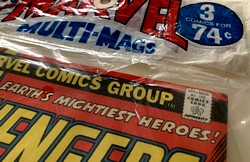 |
|
Given its age, the polybag of
this September 1975 MARVEL
MULTI-MAGS is very clean in comparison to
some packagings of the same period and
only shows one sign of wear - a fairly
small tear just below the sealing line of
the label (also visible is the punched
"air escape" hole which ensured
flat packaging once the pouch was
sealed). But fortunately, this slight
wear of the bag did not harm its
contents.
|
The
three individual comic books inside proved to be
in excellent overall condition: pristine covers
with perfect gloss and shine, perfectly flat and
tight (without any spine stress), with no creases
and sharp edges, and off-white pages.
|
|
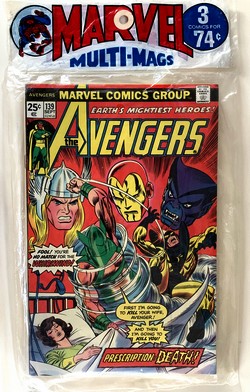 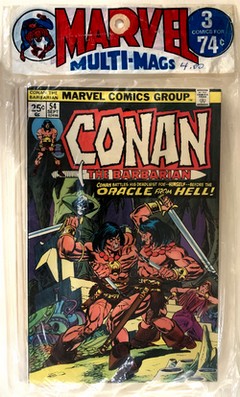
|
|
| |
| No titles had
permanent slots in the MARVEL MULTI-MAGS, although the Avengers and Conan
did feature often. But no matter the frequency, missing
out on the continuation of a storyline was a distinct
possibility with some titles (such as Avengers and
Conan) and all but certain with others (the
third title in this specific MULTI-MAGS,
Jungle Action, appears to have been included no
more than just this once). On top of this, the continuity
of the Marvel Universe of the 1970s was such that
storylines usually evolved over more than one issue, so
that having one single issue of a title would possibly
provide for an entertaining read but also most likely end
on a cliffhanger - to be resolved in the next issue
(which would not necessarily be included in any
subsequent MARVEL
MULTI-MAGS). This didn't exactly make the MULTI-MAGS an ideal way of getting your
Marvel comic book fix. However,
one needs to bear in mind that this was a common fate of
the average comic book reader in the 1970s Bronze Age,
whether his or her comic books came packaged in a plastic
bag or as single issues from a display or spinner rack.
Back in those days, an uninterrupted supply of specific
titles simply was not guaranteed. Not worrying too much
about possible gaps in storylines became something of a
routine - besides, you would usually get a recap of what
had happened so far on the first page. So all in all it
simply was a part of being a comic book fan in the 1970s
- just as the monthly Bullpen Bulletins (which were the
responsibility of the editor-in-chief) and the in-house
advertising were.
The Bullpen Bulletin ("A
frantic, frenetic, fun-filled foray into the
fable-fraught fortress of fandom's favorite
fraternity!") featured a verbose
announcement of an upcoming Treasury Edition of the Wizard
of Oz by Stan Lee in his regular SOAPBOX
column, while the first of the various
ITEM! bullet points
actually talked about the non-publication of some
previously announced 50¢
Giant-Size titles.
|
| |
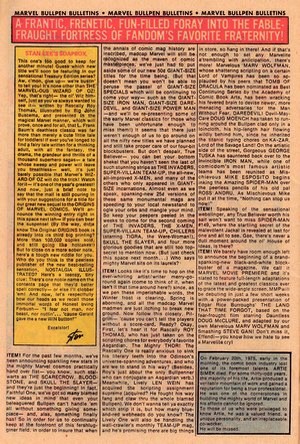 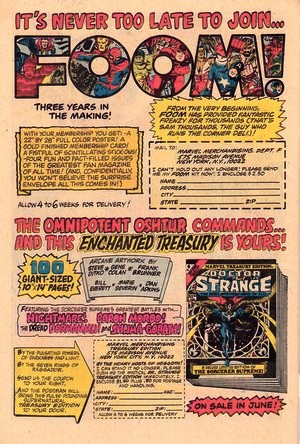 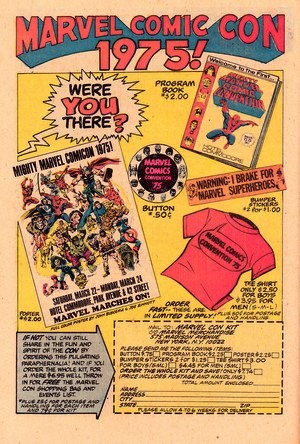 |
| |
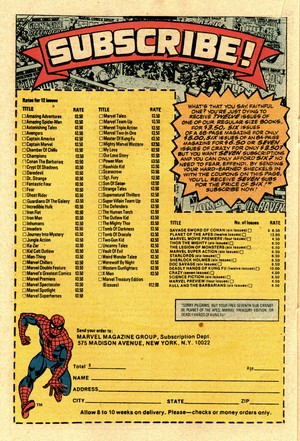
|
|
Marvel
was precariously overextending itself in
a continued attempt to push the
competition off the newsagent racks by
flooding them with its own product - but,
as readers were told in the typical
Marvel style:
"it
seems that there just weren't enough
of us to go around on all the nifty
new titles we have planned and still
take proper care of our four-bit
blockbusters. But don't despair, True
Beliver (...) keep your peepers
peeled in the weeks to come".
The other ITEM! bullet
points were chiefly concerned with new scripting and art
assignments on various titles , and a
special announcement box broke the news
to readers of the passing of Artie Simek (6
January 1916 - 20
February 1975),
letterer supreme:
"He
was one of the cornerstones in
building the mighty world of Marvel
and his efforts cannot be
ignored".
The problem of
Marvel creating a hyperinflation of
titles was mirrored in a full-page
in-house ad promoting subscriptions,
which featured no less than an
astonishing 63 colour titles plus 14
black & white magazines. In
comparison, DC Comics had 38 colour
titles to offer newsagents in mid-1975
(September cover date production run).
Marvel was clearly winning the numbers
game, but it wasn't sustainable and would
continue to cause massive headaches for
its editors over the next two to three
years as issues could not be finished on
time.
|
|
|
| |
| Also included in all three
comics collected in this MARVEL MULTI-MAGS
was a combined FOOM / Giant-Size Doctor Strange
in-house advert, as well as a 1975 Marvel Comic-Con
merchandising ad. |
| |
|
| |
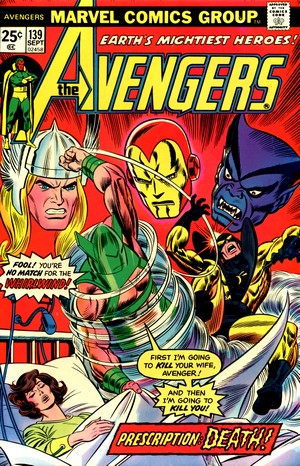
|
|
AVENGERS
#139
September 1975
(monthly)
On Sale: 17 June 1975
Editor
- Len Wein
Cover - Gil Kane (pencils) & John
Romita (inks)
"Prescription:
Violence!" (18 pages)
Story -
Steve Englehart
Pencils - George Tuska
Inks - Vince Coletta
Lettering - Irv Watanabe
Colouring - Phil Rachelson
Synopsis
! SPOILER ALERT !
The Whirlwind - old enemy of (at
the time) Ant-Man and the Wasp - attacks
the critically injured Janet Van Dyne
(aka the Wasp) in hospital while also
trying to bring down Yellowjacket. His
motives become clear when Whirlwind is
unmasked - he has been the chauffeur for
Janet Van Dyne and Hank Pym (aka Yellow
Jacket) for several years, gaining their
confidence in order to strike a final and
decisive blow against the couple.
|
|
|
| |
| Ultimately, Yellow Jacket and the Beast bring
Whirlwind down and foil his plot. In a different subplot,
Iron Man and Moondragon travel to Dr. Doom's old castle,
worried about Hawkeye's absence since his attempt at
using Doom's time machine in order to find the Black
Knight. |
| |
| Avengers #139 is an
excellent example to show how comic book fans
could get by quite well even if they were unable
to procure an uninterrupted run of a title.
Whereas the encounter with Whirlwind is pretty
much a done-in-one story, readers could piece
together why Janet Van Dyne was in hospital (the
splash page made it clear that the Toad had
something to do with it, and further details were
not required to enjoy this issue on its own), and
the Hawkeye/time machine thread was very low key
(it sounded interesting but it was also clearly
another story for another day, so not to worry
too much, there were plenty of those). All of
which just goes to show what a splendid job Steve
Englehart did, and the only regret one could have
about George Tuska's pencils is that Iron Man
doesn't feature in too many panels.
|
|
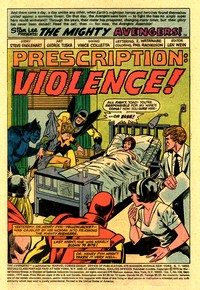 |
|
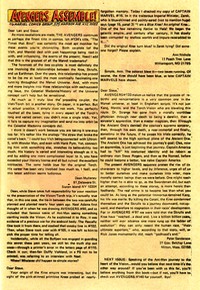 |
|
| |
| The Avengers,being a monthly title, featured
a regular letters page, aptly named "Avengers
Assemble". |
| |
 |
| |
| |
|
| |
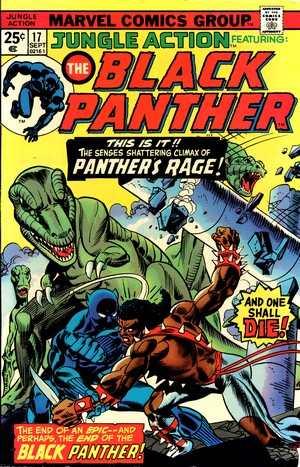
|
|
JUNGLE
ACTION #17
September
1975
(bi-monthly)
On Sale: 17 June
1975
Editor - Len Wein
Cover - Gil Kane (pencils) &
Frank Giacoia (inks)
"Of
Shadows and Rages" (19
pages)
Story
- Don McGregor
Pencils - Billy Graham
Inks (credited) - Billy Graham
Inks (uncredited) - Virgil
Redondo *
Lettering (credited) - Charlotte
Jetter (pages 1-11)
Lettering (uncredited) - Karen
Mantlo (pages 11-19) *
Colouring - Michele Wolfman
*
uncredited contributions as per
this issue's creative talent
information on comics.org
Synopsis
!
SPOILER ALERT !
Killmonger
invades Central Wakanda with his
army, his assassins, and his
dinosaurs. The Panther meets him
at Warrior Falls. Just as
Killmonger is prepared to kill
the Panther, Kantu pushes
Killmonger over the falls.
|
|
|
|
| |
| If Avengers
#139 was an excellent example to show how comic book fans
could get by quite well even if they were unable to
procure an uninterrupted run of a title, then Jungle
Action #17 is proof that this wasn't always the case
- since it featured part 12 of a 12 part story
("Panther's rage") which would even be followed
by an epilogue (making it more of a 13 part story arc).
Clearly, if you missed some (or all) of the previous
instalments you would be somewhat wondering what was
going on and even who everybody was. |
| |
| Incredibly enough, Jungle
Action was a bi-monthly title during its
entire run, so even readers who did follow every
part of "Panther's rage" saw this one
through over a period of two years. Clearly an
oddball choice for a MARVEL MULTI-MAGS, the data regarding the contents
of Marvel's comicpacks of the 1970s seems to
indicate that this was in fact the one and only
time an issue of Jungle Action
was part of a MULTI-MAGS. Reading it as such the
story comes across as slightly confusing; certain
characters are hard to place, the presence of
dinosaurs (explained, no doubt, in previous
instalments) is perplexing, and any depths of the
plotting are most likely lost on the reader as a
slow paced story suddenly jumps to its
conclusion, almost as though the creative team
ran out of pages.
Jungle Action was initially a
Tarzan-style reprint title until the Black
Panther took over as of Jungle Action #5
(July 1973); the title ran for a total of 24
issues until cancelled in November 1976.
The title is also interesting from a comic
book history point of view: Billy Graham, who
took over the artwork as of Jungle Action
#10 (July 1974), was the only African American
comic book artist working for a major publisher
at the time.
|
|
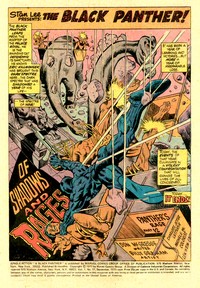 |
|
| |
| |
|
| |
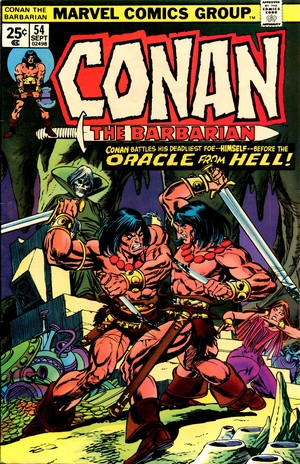
|
|
CONAN
THE BARBARIAN #54
September
1975
(monthly)
On Sale: 17 June 1975
Editor -Roy
Thomas
Cover - Gil Kane (pencils) &
Tom Palmer (inks)
"The
Oracle of Ophir!" (18
pages)
Story - Roy
Thomas
Pencils - John Buscema
Inks - Tom Palmer
Lettering - John Costanza
Colouring - Phil Rachelson
Synopsis
!
SPOILER ALERT !
Arriving in
the city state of Ronnoco with
Princess Yvonna as a hostage,
Conan and his companions Captain
Murilo and Tara quickly learn of
impending doom in the shape of a
giant shadow creature. At the
suggestion of Conan, King Belzamo
of Ronnoco agrees to consult with
an oracle and commands Conan to
undertake the mission.
|
|
|
|
| |
| At the cave where the oracle of Ophir resides,
Conan find a massive guardian denying him entrance. After
defeating him and taking the giant’s ornate
sword, the Barbarian crawls through the narrow cave
entrance and finds the oracle - a cowled skeleton who
speaks in riddles Conan cannot comprehend, and decides
that it is best to take his leave from this eerie place.
As he exits the cave, he finds that a new guardian has
taken up position –
and he is a spitting image of the Cimmerian himself. It
is clear to Conan that there is magic at work here, and
he discovers that the sword he picked up from the giant
guardian compels him to not leave the place. Falling back
on his own sword, the Cimmerian defeats his Doppelgänger
and hastily sets out back to Ronnoco - while a looming
black shadow darkens the horizon... |
| |
The adaptation of Robert E.
Howard's Conan the
Barbarian (first published in Weird
Tales Magazine in December 1932) is one of
the big success stories of the House of Ideas,
and it was Roy Thomas who convinced Stan Lee and
publisher Martin Goodman - although the initial
suggestion came from outside the company:
"Marvel’s
readers kept writing us letters saying we
should pick up the rights to a few of these
things that were coming out in the bookstores
as well as doing superheroes. One thing they
suggested a lot was a sword and sorcery
title, and especially Robert E. Howard and
Conan were being mentioned. I was somewhat
familiar with them and Stan really wasn’t."
(Roy Thomas in NN, 2010)
Lee told Thomas to write a memo to Goodman,
and the rest is comic book history.
|
|
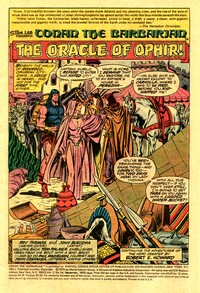 |
|
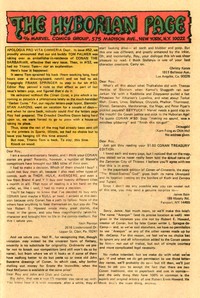 |
|
| |
However, after a first issue with a small print run
but excellent sales, Conan the Barbarian was
initially off to a disappointing start.
"For
a combination of reasons every one of the next seven
issues sold less well than the one before. (...) It
seemed to be going nowhere fast (...) and then Stan
decided to take a look at the covers (...) “You’ve got too
many animals on the covers,” he said
(...) “Get
some more humanoid menacing-looking villains
instead" (...) [so] we had skeletal warriors on
the [next] cover and that issue, #8, picked up in
sales and the next issue, which had a kind of
menacing winged man on it fighting Conan, that picked
up a little more from there and after that it was
never in any kind of danger of being cancelled for
the next fifteen, twenty years." (Roy
Thomas in NN, 2010)
Conan the Barbarian had
a staggering run of 275 issues from October 1970 to
December 1993 with a very loyal readership, not the least
due to the long stints of writer Roy Thomas (who penned
issues #1-115 and #241-253) and penciller John Buscema
(who provided the art for issues #25-190).
|
| |
| |
|
| |
| No 1970's Marvel comic book
was, of course, without (a lot of) third party
advertising, some of which was "okay" (mostly
if it featured Marvel characters) and some of which was,
well, something else (such as the infamous flea market
ads promising anything and everything). All three titles
included in this September 1975 Multi-Mag carried exactly
the same ads, some of which are illustrated here. |
| |
|
| |
|
 |
|
Today, MARVEL
MULTI-MAGS are first and
foremost a time capsule; opening
that plastic bag offers a
nostalgic glimpse into what it
was like to be a comic book
reader in the 1970s. And
then as now, the combination of
the three titles in these sealed
polybags could go either way.
Sometimes it's all thrills, and
sometimes there's a lemon (or
two, if you're really unlucky) in
there. |
|
|
|
| |
| This
September 1975 MARVEL
MULTI-MAGS would,
I am pretty certain, have left me with almost the
same impression back then as it does today. For a very long time,
Earth's Mightiest Heroes were almost a guarantee
for good Marvel superhero reading, and Avengers
#139 is definitely a comic book I would have
loved as a teenager - and it has aged rather
well, too, so remains a really entertaining read
to this day.
The same goes for Conan
#54, with a highly entertaining plot, a
flowing storyline and some great artwork. I
wouldn't actively seek out Marvel's sword and
sorcery material back in the days, but whenever I
chanced upon it, most of it was good
entertainment - and Conan #54 is
exceptionally well done.
Which leaves the comic
book sandwiched into the middle of this MARVEL MULTI-MAGS - which could at times
be an uncertain bet. From today's
collector's perspective, Jungle Action
#17 is interesting, but of course an awful choice
for a MULTI-MAGS, given that it
features the final segment of a 12 part story
arc. Sacks (2014) is full of praise ("By
the time it finished, 'Panther's Rage' became
Marvel's longest self-contained narrative,
earning McGregor a well-deserved reputation for
long-form plotting and thoughtful
characterization (...) a 209-page epic [fuelled
by] McGregor's passionate writing style"),
but on its own, Jungle Action #17 does
not make me want to read any of the preceding
instalments, and I seriously doubt I would have
felt any different back in the 1970s.
|
|
|
| |
| BIBLIOGRAPHY N.N. (2010) "Roy Thomas on the History of Conan", published online at ICv2, 14
October 2010
SACKS Jason
(2014) American Comic Book Chronicles - The 1970s
(1970-1979), TwoMorrows Publishing
|
| |
|
| |
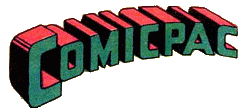
More on comic packs
|
| |
|
| |
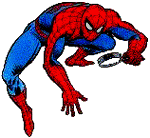

(c) 2021
uploaded
to the web 25 March 2021
|
| |
|
| |
|






 SPOTLIGHT
ON
SPOTLIGHT
ON












